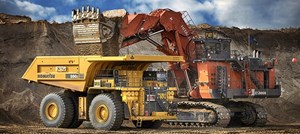Canada’s largest oil sands producer pledges 30% emissions reduction by 2030
CALGARY (Bloomberg) --Suncor Energy plans to cut net greenhouse-gas emissions from its operations by about a third until the end of the decade as investors increasingly push oil companies to help fight climate change.
Canada’s largest oil-sands producer aims to reduce emissions by 10 megatons by 2030, from about 29 megatons in 2019. Half of the target will be achieved at its oil sands plants, refineries and other facilities through using carbon capture technology, switching fuels for operations and increasing energy efficiency, Chief Executive Officer Mark Little said in an investor day presentation Wednesday. The other half will involve projects including the new 40 Mile Alberta wind-farm that’s scheduled to be completed by 2022. The goal is part of efforts to reach net-zero emissions from operations by 2050.
Neither target involves so-called Scope 3 emissions, the ones produced when the fossil fuels sold by oil companies are burned by vehicles, ships and aircraft and represent the bulk of greenhouse-gas pollution.
Suncor is just the latest major fossil fuel producer to roll out carbon reduction targets amid increasing pressure from shareholders. Major investors including Norway’s sovereign wealth fund have divested of oil sands companies, including Suncor, in recent years. Earlier in 2021, Suncor was the only oil sands producer that was spared divestment by the New York state pension fund.
On Wednesday, a little-known firm that’s been pressing Exxon Mobil Corp. to come up with a better plan to fight global warming won two seats on the company’s board in an historic win for climate-minded investors.
In addition to the Southern Alberta wind farm, Suncor is currently converting a coke-fired boiler at its Northern Alberta oil sands Base Plant into a less polluting, gas-fired cogeneration unit that will feed power to the Alberta electric grid. Earlier this month, Suncor announced a project to produce 300,000 metric tons a year of hydrogen for powering Suncor’s Edmonton refinery and for injection into Alberta’s natural gas distribution system. The hydrogen project, which would use carbon capture technology, won’t be sanctioned before 2024 and wouldn’t enter operation until 2028.
Unlike in the past, when Suncor invested in huge multibillion-dollar oil sands facilities such as the new Fort Hills mine, investors were warned in Wednesday’s presentation not to expect large greenfield projects in the future. The company will instead focus on generating free cash flow that will be used to pay down debt, raise dividends for shareholders and buy back shares.
Suncor’s production will grow “modestly” after 2021 and will average 800,000 barrels a day over next four years, Little said. The company plans no more than C$5 billion ($4.1 billion) a year in capital spending through 2025 to sustain its business and increase efficiency of operations, generating C$2 billion of incremental free funds flow by 2025.
The move away from production growth happens as world oil demand is also expected to increase moderately into the next decade and plateau before beginning a multi-decade decline, he said.



